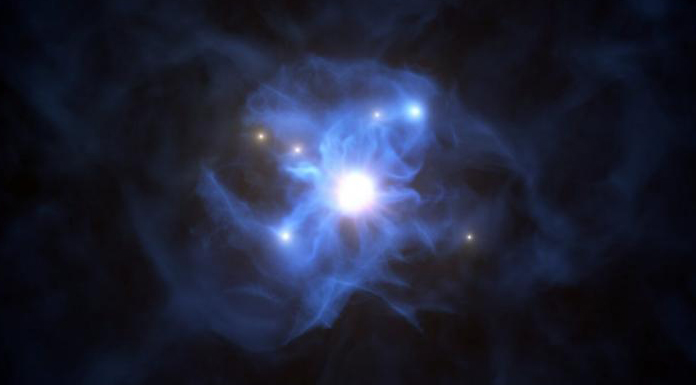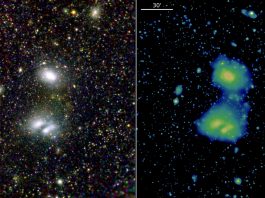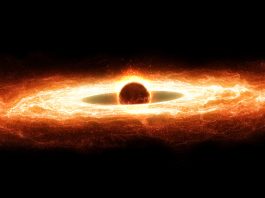Astronomers using ESO’s Very Large Telescope have discovered that when the Universe was less than a billion years old six galaxies were trapped in a web around a supermassive black hole.
This is the first time such a close grouping has been seen so soon after the Big Bang. The findings from the Very Large Telescope supports the theory that black holes can grow rapidly within large, web-like structures. Astronomers believe that dark matter could be responsible for the webs around supermassive black holes.
Lead author Marco Mignoli, an astronomer at the National Institute for Astrophysics (INAF) in Italy, said: “This research was mainly driven by the desire to understand some of the most challenging astronomical objects — supermassive black holes in the early Universe. These are extreme systems and to date we have had no good explanation for their existence.”
As published today in Astronomy & Astrophysics, the new observations from the Very Large Telescope revealed several galaxies surrounding a supermassive black hole, all lying in a cosmic ‘spider’s web’ of gas extending to over 300 times the size of the Milky Way.
The light from the web around the supermassive black hole, with its black hole of one billion solar masses, has travelled to us from a time when the Universe was only 0.9 billion years old. Co-author Roberto Gilli, also an astronomer at INAF, said: “Our work has placed an important piece in the largely incomplete puzzle that is the formation and growth of such extreme, yet relatively abundant, objects so quickly after the Big Bang.”
Astronomers think giant halos of dark matter are key to understanding the formation of the webs around supermassive black holes. These large regions of invisible matter are thought to attract huge amounts of gas in the early Universe; together, the gas and the dark matter form the web-like structures where galaxies and black holes can evolve.
Co-author Colin Norman of Johns Hopkins University, US, said: “Our finding lends support to the idea that the most distant and massive black holes form and grow within massive dark matter halos in large-scale structures, and that the absence of earlier detections of such structures was likely due to observational limitations.”









